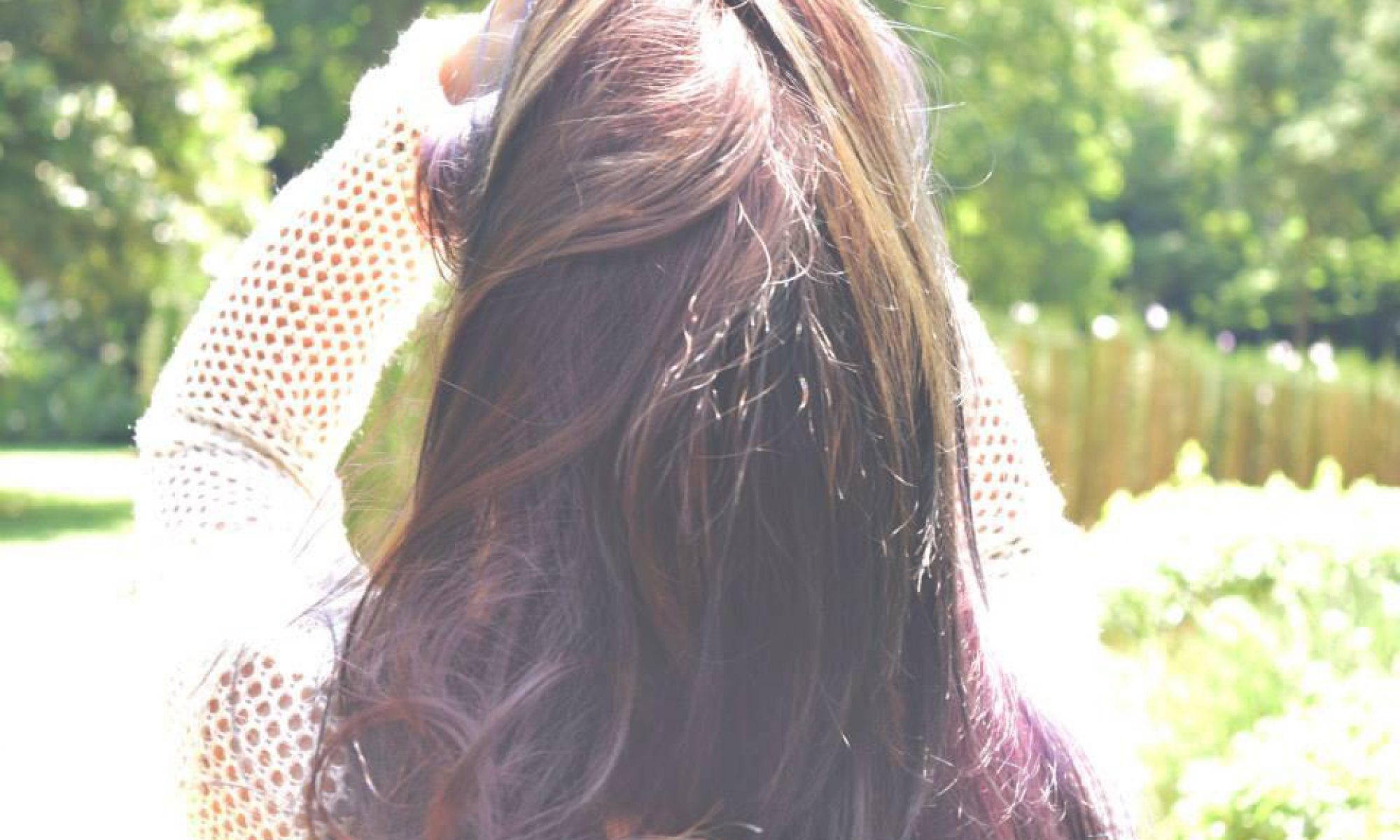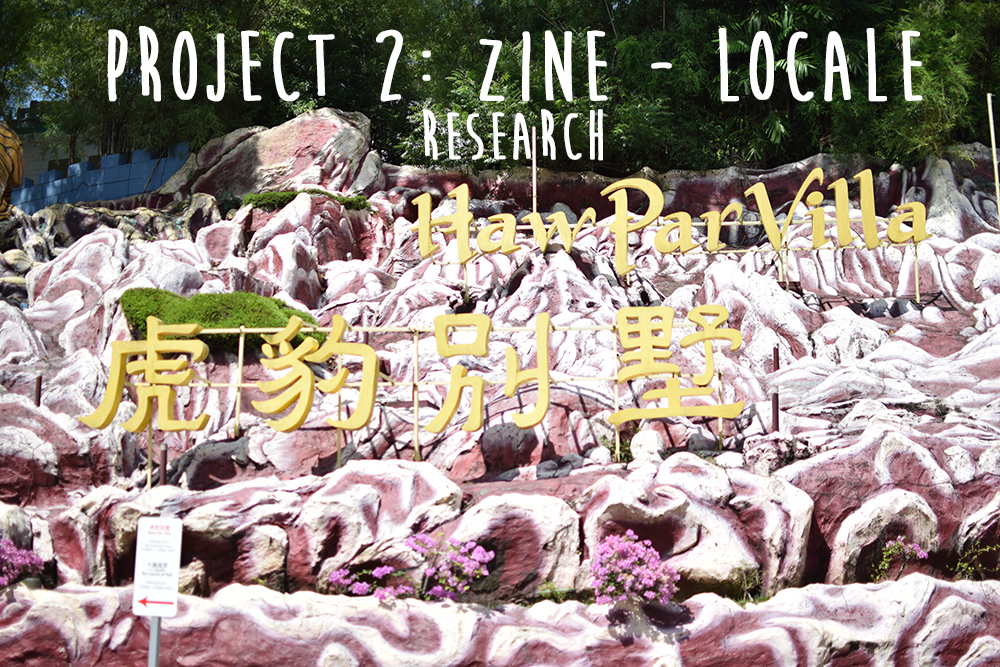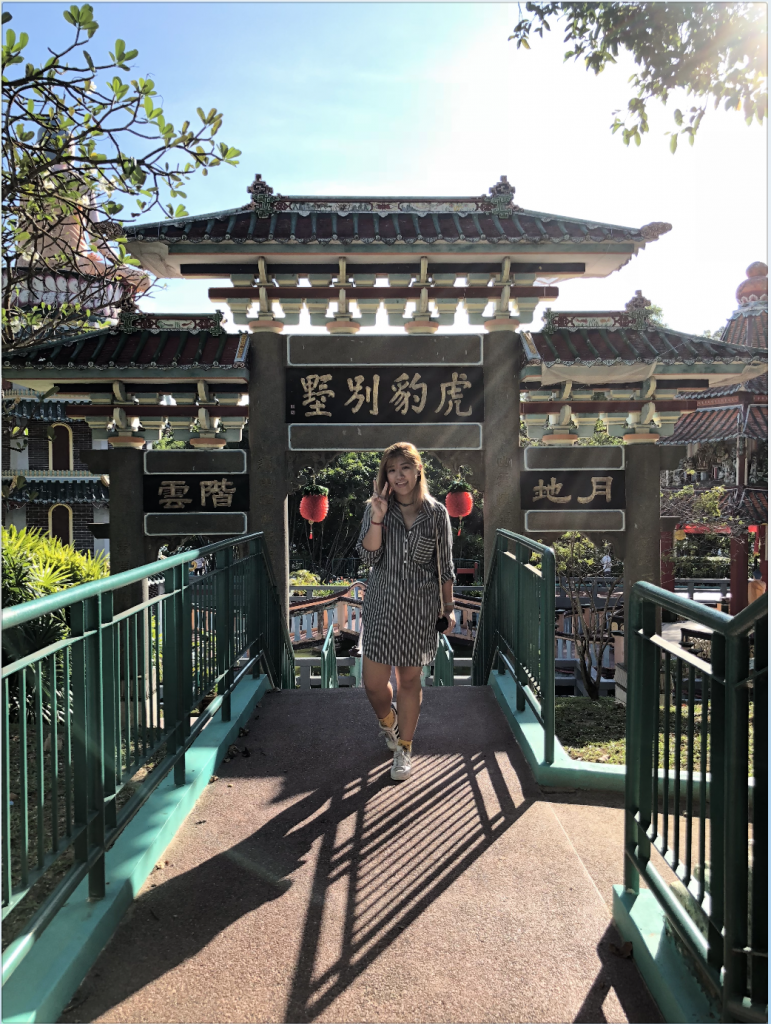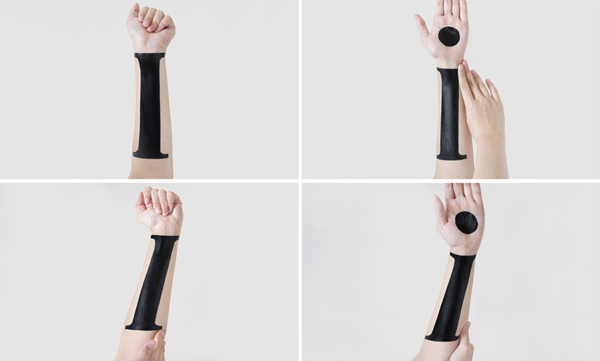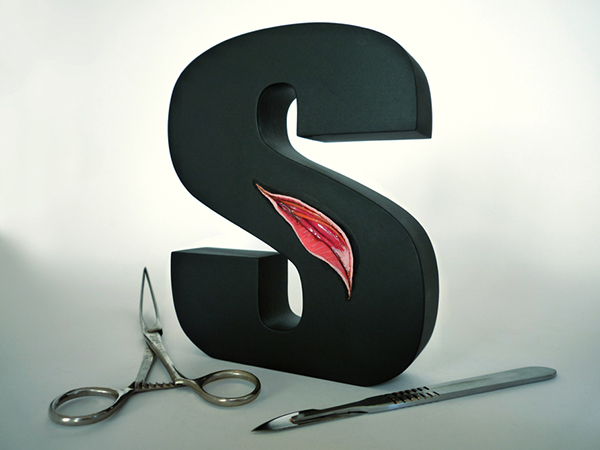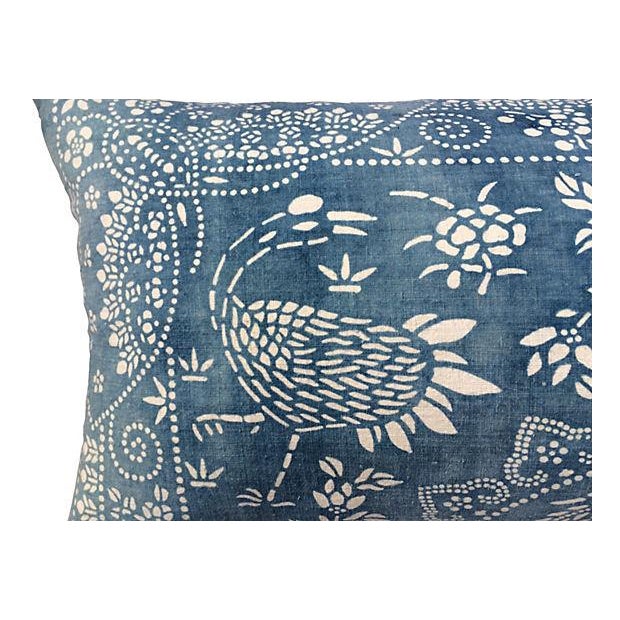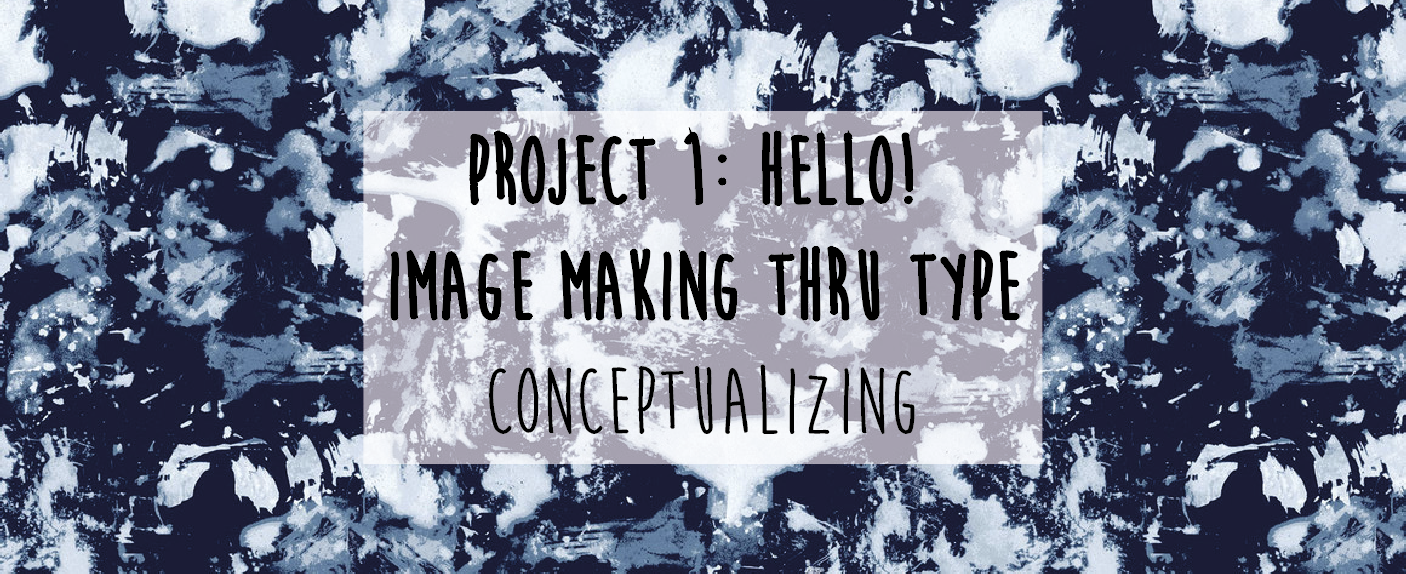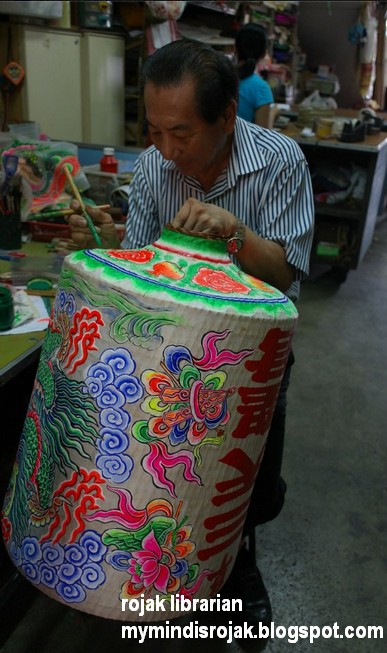For the second assignment of Graphic Form, it seems really exciting!
We have to go to a location in Singapore and do primary and secondary research on it.
There was several locations I had in mind: Haw Par Villa, Changi Village, Pasir Ris Farmway and Redhill.
Upon discussion with Joy, I headed to both Haw Par Villa and Pasir Ris Farmway, and decided on Haw Par Villa, as there wasn’t enough collaterals to work on Farmway.
I’ll be talking about Haw Par Villa in a few sections:
1. First impression
2. Secondary Research
3. Primary Research (Photos/Videos/Interviews)
4. Online Survey
5. Survey Results
Primary Research: original, first-hand data collected personally, e.g. photos, videos, interviews, surveys
Secondary Research: data collected for research purposes, e.g. online websites, official reviews, blogs
Qualitative Data: data that cannot be quantified or measured, e.g. five senses, personal feelings and thoughts, descriptions
Quantitative Data: data which can be quantified and measured, e.g. statistics, numbers, charts
1. First Impression
My first visit to Haw Par Villa was with my family, a random day out, when I was aged 11. I remembered the trip very vividly, as all the sculptures were so realistic and etched in my mind. Unlike a normal tourist attraction, it was enriched with tons of Chinese heritage culture and folklore! There was sculptures ranging from Buddhism (Buddha, Goddess of Mercy), all the way to Chinese myths (Goddess White Snake). However, the best of all, that I remember the most was the Ten Courts of Hell in Haw Par Villa. My parents actually brought me there to teach me on my culture and the existence of hell in my culture, telling me the punishments I’ll get if I’ve sinned.
Therefore, when deciding on a location, Haw Par Villa came to my mind, as it’s a pretty under-rated tourist attractions that even Singaporeans do not/dare not visit!
2. Secondary Research
Before visiting Haw Par Villa, I went online to research on more information.
What is Haw Par Villa?
Haw Par Villa was formerly known as Tiger Balm, spans about 8.5 hectare along Pasir Panjang Road. It was first built in 1937, by Aw Boon Haw, as a gift for his brother, Aw Boon Par.
It’s used as a venue for traditional Chinese values, Singapore largest outdoor art gallery. In 1988, Singapore Tourism board took over and converted it into a theme park. However, high entrance fees was charged and the attraction ran at a loss during its operation. In the early 2000s, the fee was removed, but the public interest declined.
Location: 262 Pasir Panjang Road, Singapore 118628
Nearest Mrt: Haw Par Villa Station CC25 (Circle Line)
Buses: Bus 10, 30, 30e, 51, 143, 175, 176, 188, 200, 589
Opening hours:
9am – 7pm (last entry 6pm)
Ten Courts of Hell:
9am – 6pm (last entry 5.45pm)
Unique factor about Haw Par Villa
Ten Courts of Hell – Chinese depiction of afterlife
Chinese classics’ sculptures – Journey to the West, Eight Immortals, Tigers, leopard, animals, hybrid of animals & humans, and etc.
Tours around Haw Par Villa
1. Finding your Tao in Haw Par Villa; The Tiger Balm Garden Story
Daily Tour, started on 1st April 2018.
The tour starts at 10am daily, and tickets cost $5/$10.
2. Journeys to Hell; Death and the Afterlife in Haw Par Villa
Twilight Tour, Every Friday 6.30-8.30pm
Tickets cost: $9/$15/$18
Resources available:
Brochures
Site Maps
Descriptions of the sculptures
Official Haw Par Villa website
3. Primary Research
I captured some images and videosof Haw Par Villa during my trip there!
Video of Haw Par Villa!
Video of Ten Courts of Hell!
Images taken from Ten Courts of Hell & Haw Par Villa


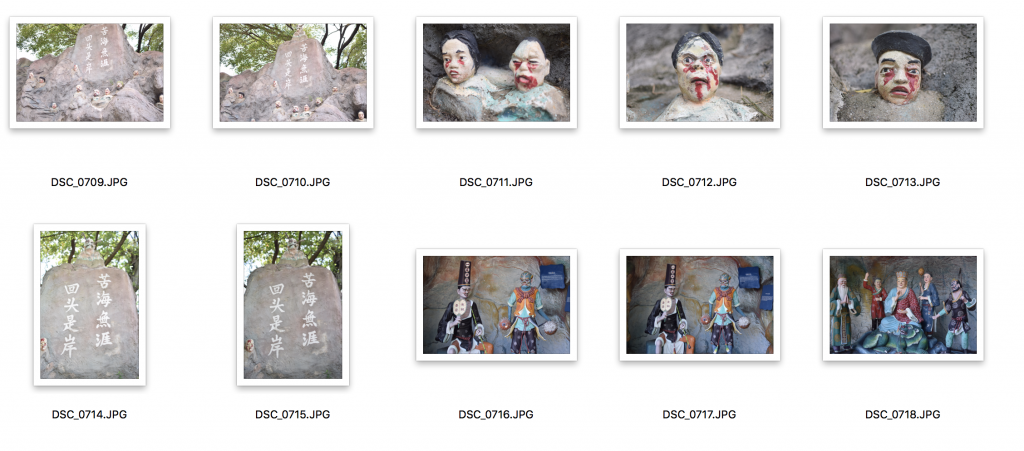
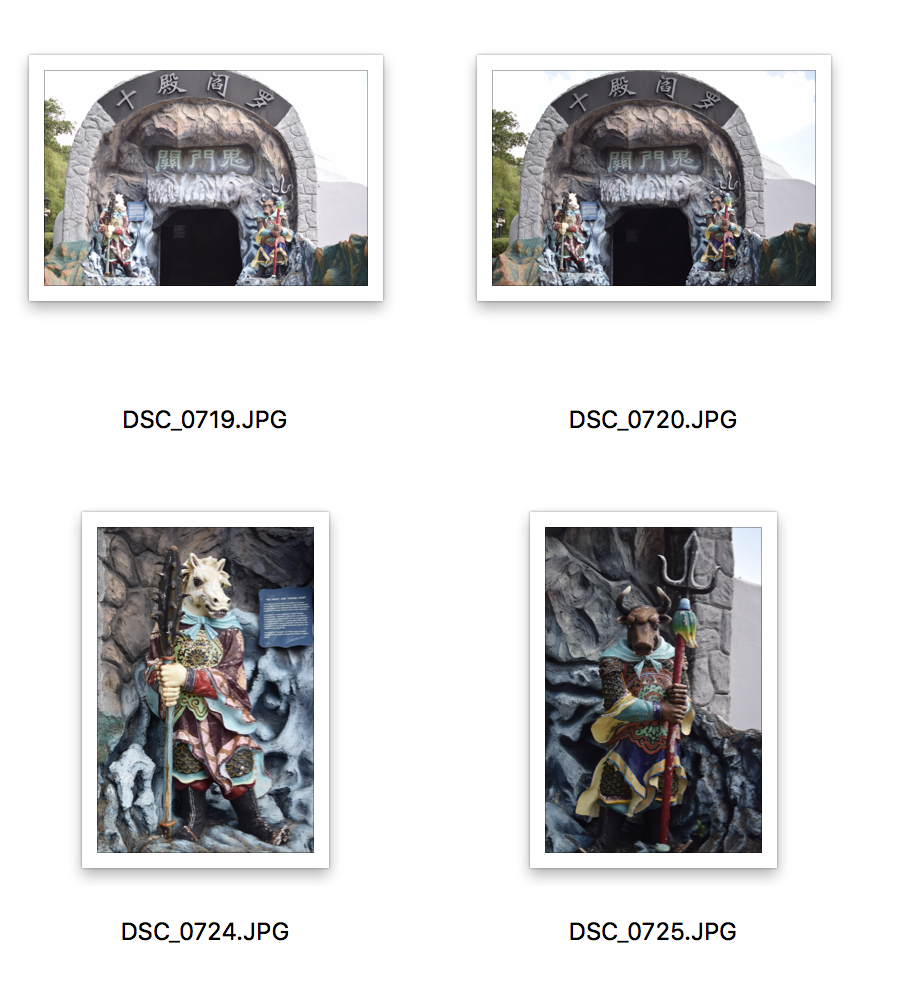
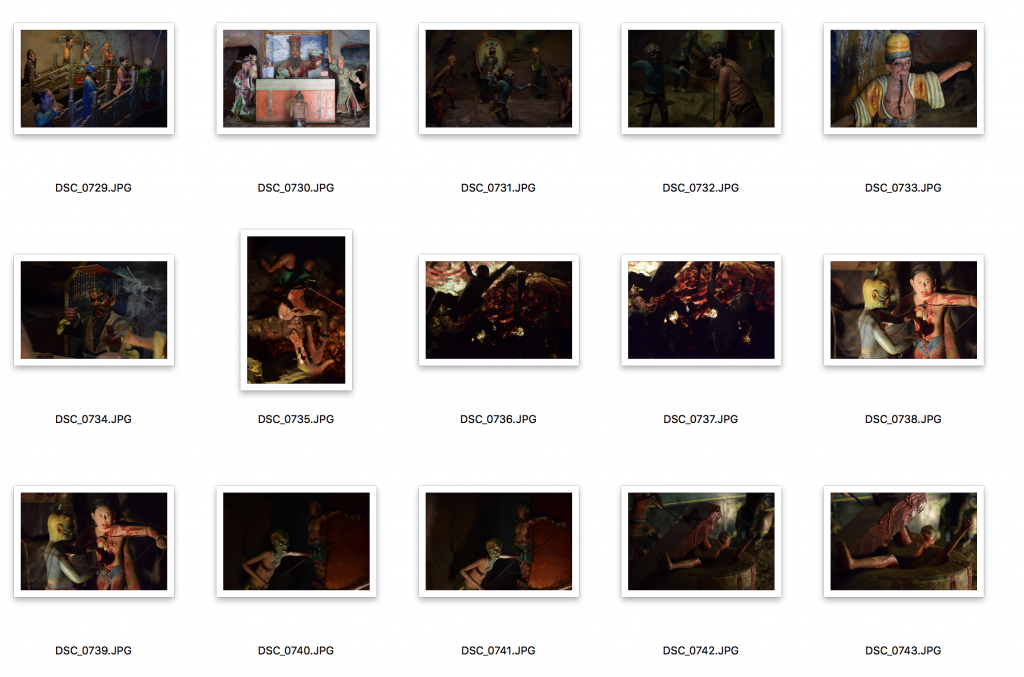
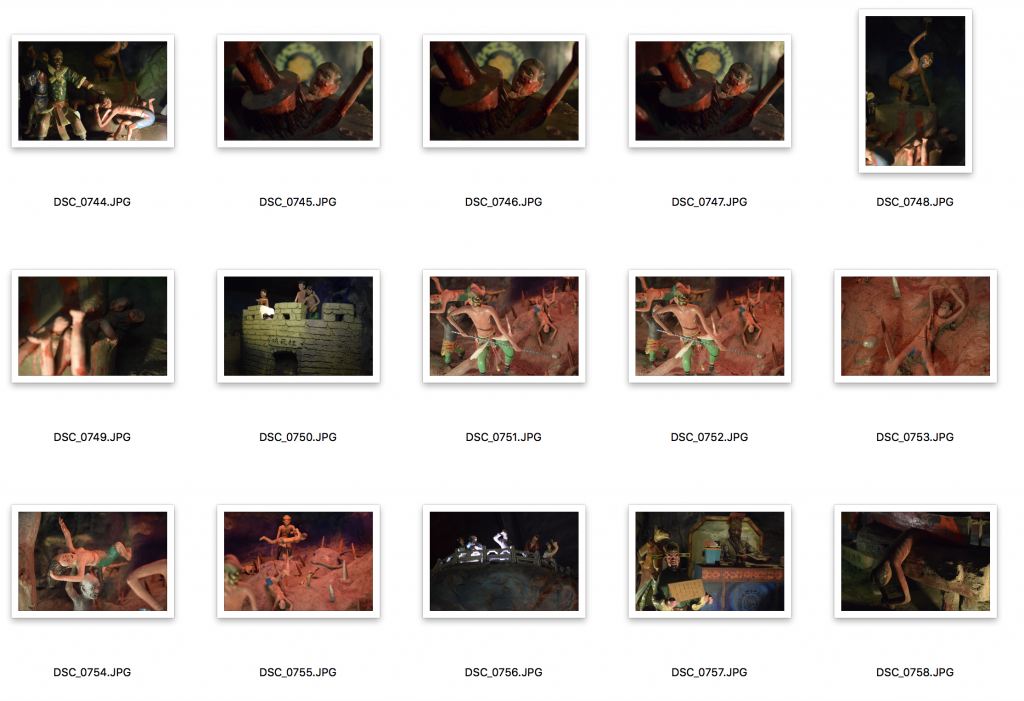
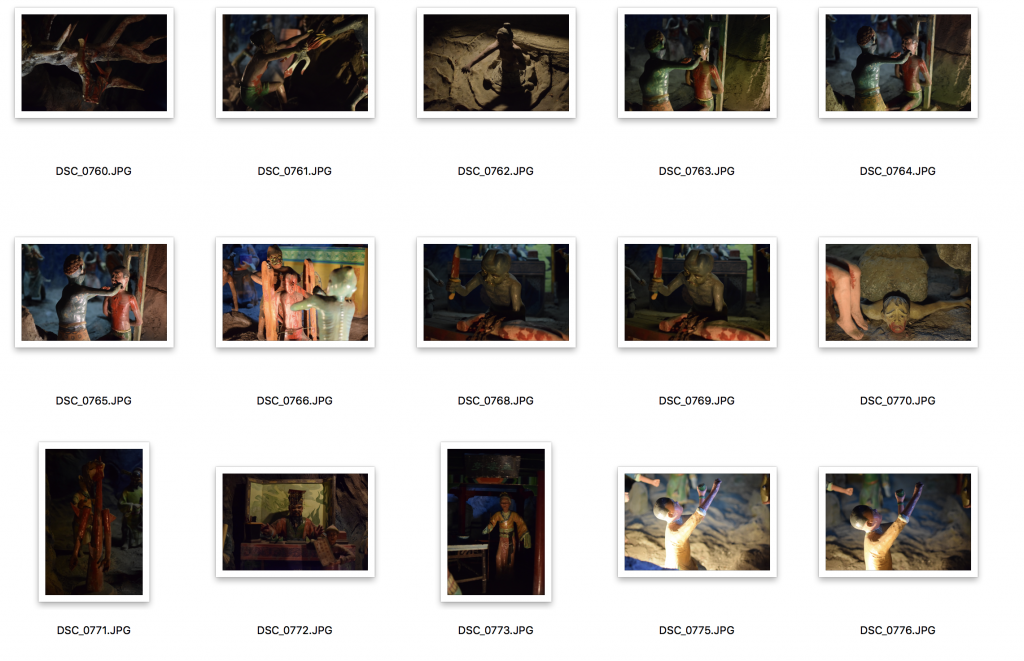
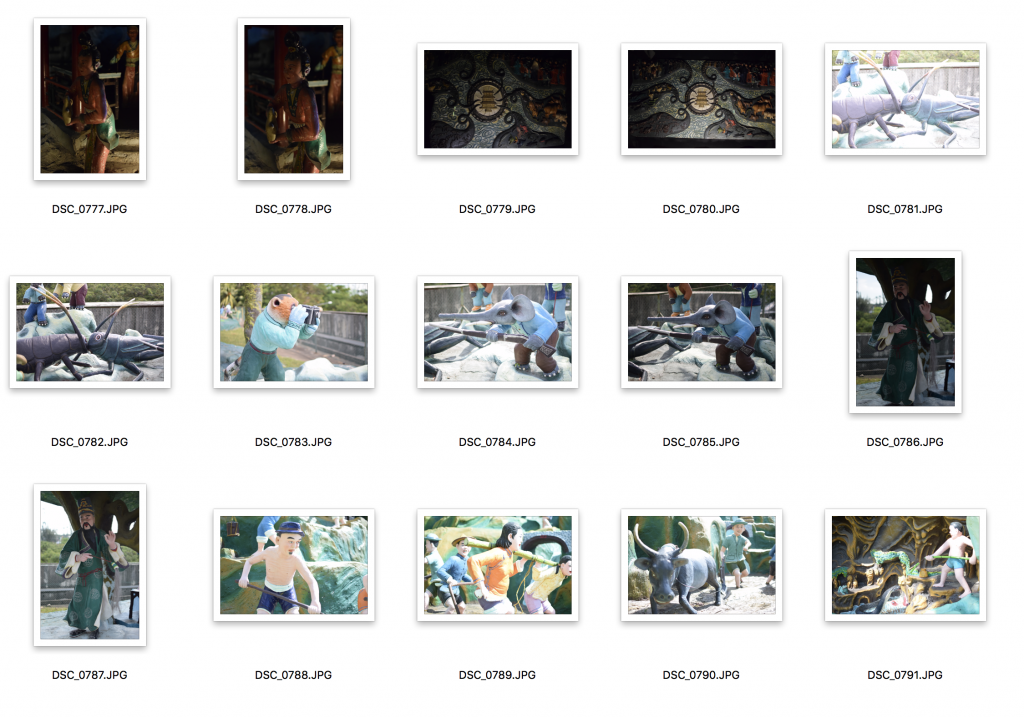
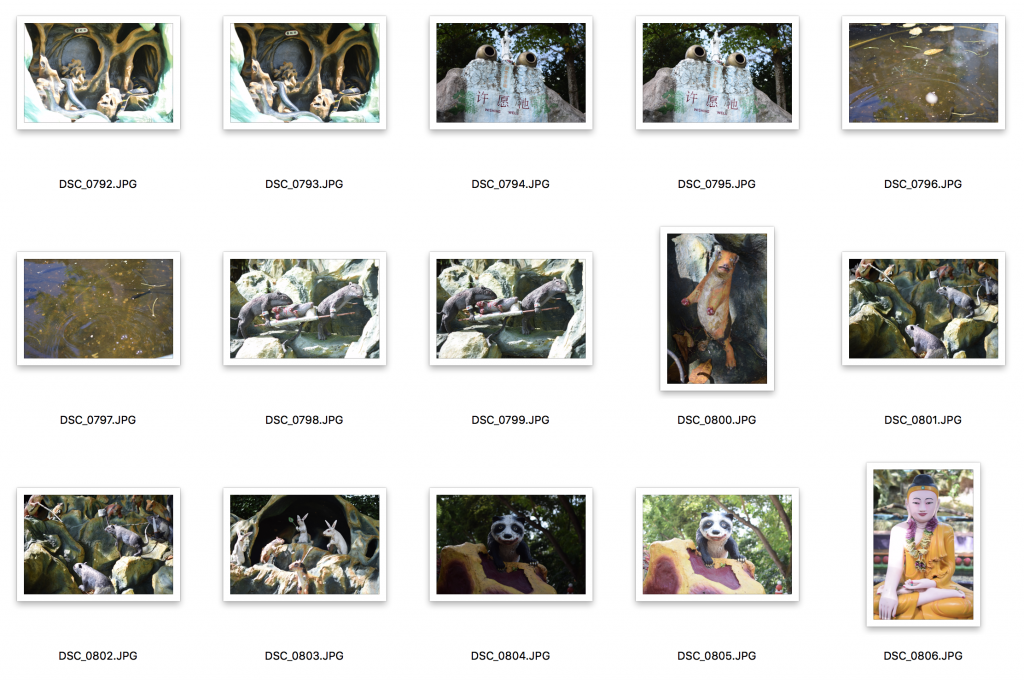
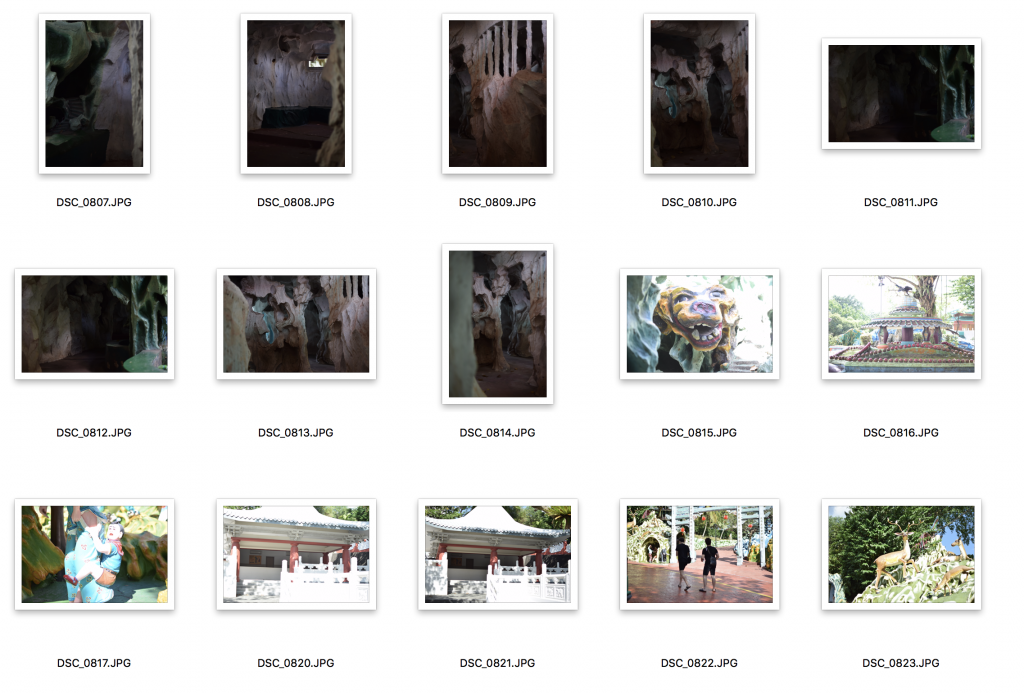
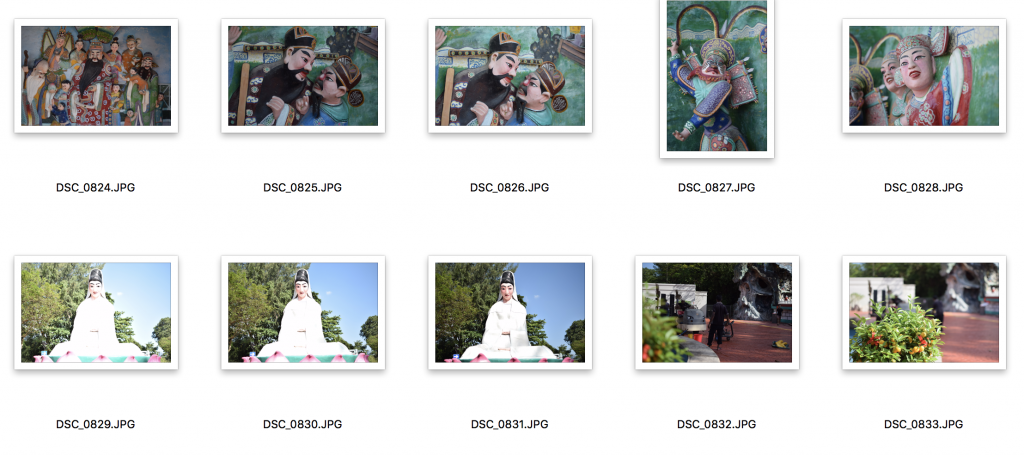
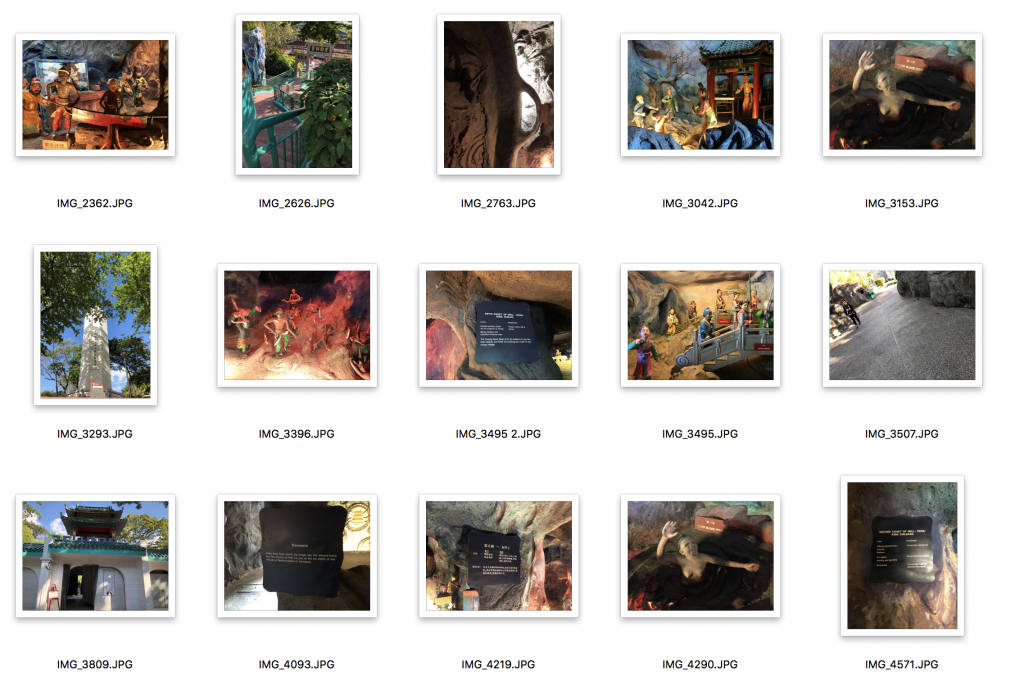
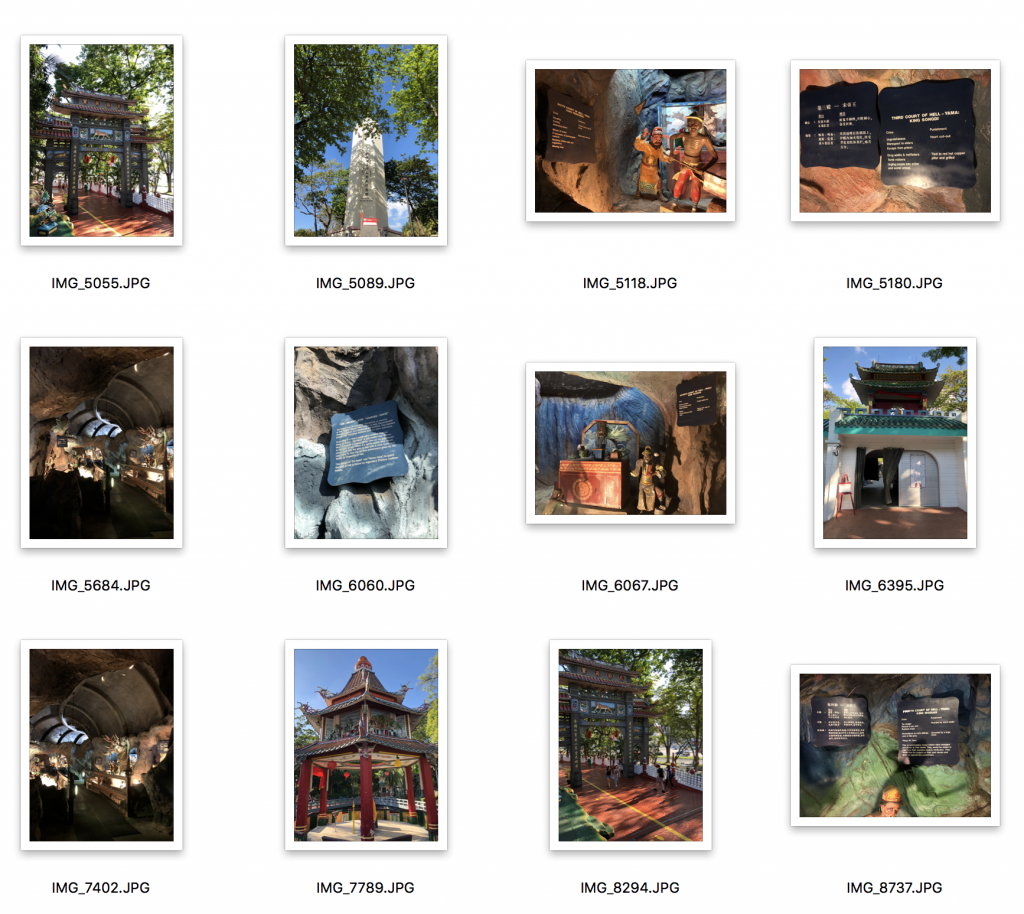
4. Interviews and Online Survey
I interviewed a few visitors at Haw Par Villa
Interviewee 1 – A guy that came with a bunch of friends, from an International School!
Interviewee 2 – Chinese tourist that visited Haw Par Villa with family
Interviewee 3 – Singaporean, visiting Haw Par Villa with friends
Upon my visit, I wanted to reach out to a larger audience, regarding their perceptions of Haw Par Villa and the Ten Courts of Hell.
I divided my survey into 6 different sections, which will be easier for me to analyse the data.
Section 1 – Generic Questions & If they have/have not been to Haw Par Villa
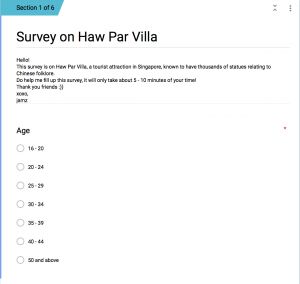
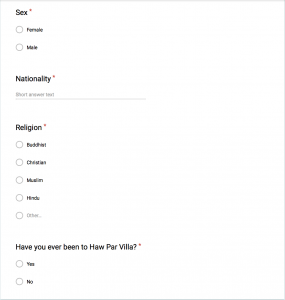
Section 2 – If they have been to Haw Par Villa 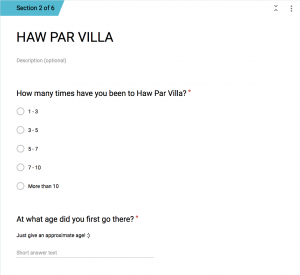
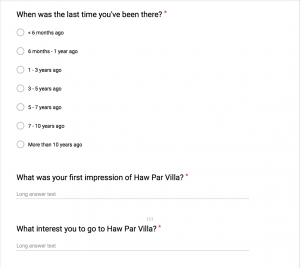
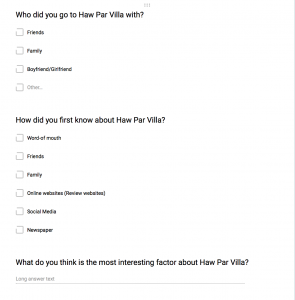

Section 3 – If they visited 10 courts of hell when they went to Haw Par Villa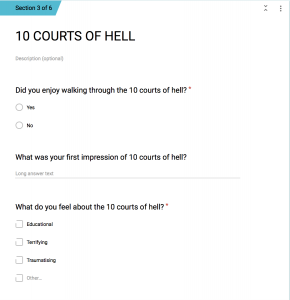
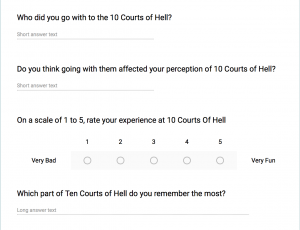
Section 4 – More questions regarding the entire location in general 
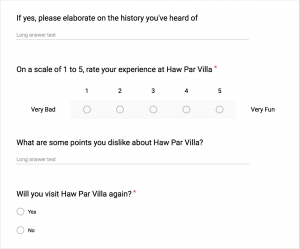
Section 5 – For respondents that have never been to Haw Par Villa
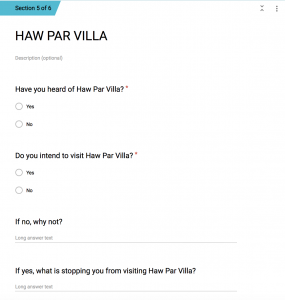
Section 6 – Perception of afterlife, applies to all respondents.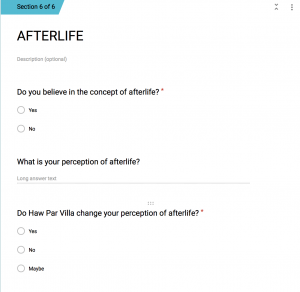
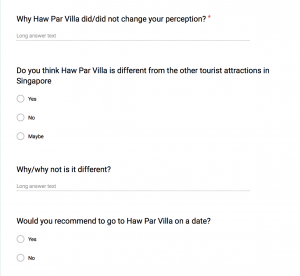
5. Survey Results
I’ve gathered a total of 50 respondents for my online survey, and will proceed to analyse it quantitatively and qualitatively during my presentation!
Links & References
https://c1.staticflickr.com/8/7240/7333093534_e95905406b_b.jpg
https://theculturetrip.com/asia/singapore/articles/history-of-haw-par-villa-in-1-minute/
https://en.wikipedia.org/wiki/Haw_Par_Villa
http://cargocollective.com/sarahmok/Haw-Par-Villa
https://www.littledayout.com/2017/06/23/haw-par-villa-singapore-tiger-balm-gardens/
https://thelongnwindingroad.wordpress.com/2017/11/16/saving-haw-par-villa-from-certain-death/
https://remembersingapore.org/haw-par-villa/
https://www.remotelands.com/travelogues/closer-eye-hell-history-singapores-haw-par-villa/
https://www.wheresidewalksend.com/court-of-hell/
https://www.singaporememory.sg/contents/SMA-52a6c5a7-8c71-4e92-bb4b-ecf4fe278bde
And that’s about it for my research on Haw Par Villa!
Till then,
Flazéda!
jamz
x
